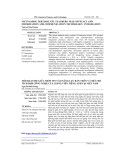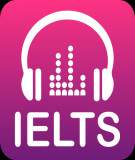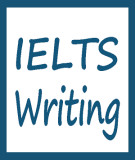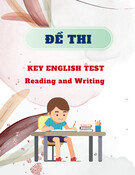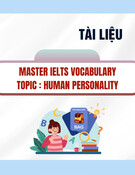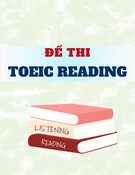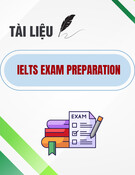
Hue University Journal of Science: Social Sciences and Humanities
ISSN 2588-1213
Vol. 133, No. 6B, 2024, p.p. 127–146, DOI: 10.26459/hueunijssh.v133i6D.7407
EFL TEACHING PRACTICES UNDER THE WASHBACK OF
HIGH-STAKES TESTS: WHAT ASPECTS ARE AFFECTED?
Tong Thi Lan Chi *, Pham Thi Hong Nhung **
* Tay Nguyen University, 567 Le Duan St., Buon Ma Thuot City, Dak Lak, Vietnam
** University of Foreign Languages and International Studies,
57 Nguyen Khoa Chiem, Hue, Vietnam
* Correspondence to Tong Thi Lan Chi <ttlchi@ttn.edu.vn>
(Received: January 09, 2024; Accepted: January 24, 2024)
Abstract: Washback, or the effects of tests on learning and teaching, is one of the important test qualities
(Bachman & Palmer, 1996). There have been a few empirical studies on the washback of different tests on
different stakeholders and their actions under the test use such as those by Brown (1997), Cheng (1997),
McKinley & Thompson (2018), Nguyen (2017), Pizarro (2010), Shih (2009), Xu & Liu (2018), to name but a
few. The results of such studies have shown that the washback of different tests varies in terms of
mechanism, direction, and intensity of teaching and learning. This study explores the washback of the
high-stakes English tests in the Vietnamese National High School Graduation Exam on the teaching of EFL
high school teachers. Six teachers, who were teaching English to students at grade 12 in the research site of
Buon Ma Thuot City (Dak Lak Province, Vietnam) were purposefully selected for the study. As a case
study, the research employed was a two-phase explanatory design with the use of a questionnaire and
follow-up interviews. The findings reveal that various aspects of teaching, such as the teachers’ choices of
textbook coverage, time allotment for teaching content, provision of extracurricular content, in-class
assessment tasks, their choices of teaching methods, application of new teaching techniques, choices of
classroom organization and language for instructions were affected by the high—stakes English tests. In
addition, the study discloses the unique teacher factors of the participants under the influence of the tests.
Keywords: washback, washback factors, teacher factor, washback mechanism.
1. Introduction
In exam-driven educational contexts like Vietnam, high-stakes tests and their results have
been used for making important decisions towards learners, and to a certain extent, towards
other stakeholders in educational settings as teachers, test developers, school administrators,
material writers, and parents (Bailey, 1996; Hughes, 1993). Once a test is high-stakes, it is more
likely to generate washback to different stakeholders than low-stakes ones (Alderson & Wall,

Tong Lan Chi, Pham Thi Hong Nhung Vol. 133, No. 6B, 202
4
128
1993). In the language teaching contexts, there have mostly been more washback research
studies on teachers and their teaching than on students and other stakeholders (Cheng et al.,
2015; Green, 2007; Messick, 1996; Shih, 2009). What may be accountable for that is teachers have
a key and active role in the education process and their teaching directly influences the learning
of their students (Bailey, 1996). In Vietnam, there have been several studies on achievement
EFL tests on both teachers and learners such as VSTEP (Nguyen, 2017), and TOEIC Listening
and Reading as university tests (Nguyen & Gu, 2020). However, few have focused on
investigating the washback of the English tests in the National High School Graduation Exam
(NHSGE)
The study was therefore conducted to gain more insights into EFL teaching practices at
Vietnamese high schools under the influences of the NHSGE English tests. Two main aspects of
EFL teaching, including “what and how teachers teach” in the centralized educational context
of Vietnam would be explored. Before that, specific teacher factors of the participants in the
study were explored to provide justifications for the teachers’ actual practice of teaching. More
specifically, the study aims to address the following two research questions:
(1) What are the teacher factors contributing to the washback effects of the NHSGE
English tests?
(2) What aspects of teaching are influenced by the NHSGE English tests?
The results of the study are hoped to contribute to the literature on washback in general
and washback of EFL tests in Vietnamese education contexts in particular. In addition, the
study is an effort to raise awareness of all the stakeholders on the influences of high-stakes tests
so that measures are taken to promote the positive washback and minimize negative washback
of tests in a test-driven education system like Vietnam.
2. Literature Review
2.1. EFL teaching
EFL teaching is the abbreviation of English as a Foreign Language teaching, which is
defined in Cambridge and Collin dictionary as the teaching of English to students whose first
language is not English. In Vietnamese educational context, EFL is a current practice while ESL
teaching, i.e., English as a second language teaching is popular in such countries as Singapore.
Popular EFL teaching methods, approaches and aspects of EFL teaching

Jos.hueuni.edu.vn
Vol. 133, No. 6B, 2024
129
Teaching different subjects may require a distinctive methodology to suit the
characteristics of those subjects. Teaching EFL is not an exception. There have been various
discussions on methodologies and approaches in teaching English as a foreign language.
Larsen-Freeman & Anderson (2011) summarized ten popular language teaching methods and
approaches, including (1) the Grammar- Translation Method, (2) the Direct Method, (3) the
Audio-Lingual method, (4) the Silent way, (5) Desuggestopedia, (6) Community language
learning, (7) Total physical response, (8) Communicative language teaching, (9) Content-based
instruction and (10) Task-based language teaching. Each method with its techniques and
activities is believed to serve different teaching goals and emphasize different language areas.
Based on goals and emphasized language areas, there will be specific characteristics of teaching-
learning process, teacher-learner interaction, and achievement evaluation, to name but a few.
Among the methods suggested above, when teachers’ goals are learners’ mastery of discrete
points like vocabulary and grammatical rules, they may employ such methods as the Grammar-
Translation Method, and Direct Method (Larsen-Freeman and Anderson, 2011; Richard, 2006;).
As explained in Larsen-Freeman and Anderson (2011), the Grammarb-Translation Method pays
attention to teaching grammar and vocabulary deductively through translation texts into native
language, whereas Direct Method advocates direct exposures to the target language through
teacher-student oral exchanges in intensive classes to build up oral communication. On the
other hand, the Audio-lingual Method focuses on presenting, drilling, and memorizing
language chunks. Based on memorizing, practicing and speaking with drilling, this method
enables learners to understand a language. When the goals of teaching go beyond discrete
language points, the Communicative Language teaching (CLT) has been widely used in various
educational contexts. There are several reasons for teachers’ advocacy of Communicative
language teaching in EFL and ESL (English as a second language) teaching. As shown in
Sreehari (2012), CLT focuses on both learning product and process, and encourages more (both
teacher-student and student- student) interaction in the target language. The use of authentic
texts and creation of links between learning inside and outside the classroom are also the salient
features of CLT. In summary, as convincingly argued in Larsen-Freeman and Anderson (2011),
there is no single best method. Instead, teachers should choose what reflects their own beliefs
about the teaching-learning process, which may originate from their experiences and their
professional training.
2.2. Teaching aspects
Alderson and Wall (1993) discussed teaching in terms of rate and sequence of teaching,
and the degree and depth of teaching and attitudes to the content, method, etc. of teaching. In
his description of “process” actions of teachers under the test influences, Hughes (1994) broke
down teaching into content (curriculum and teaching materials), methodology and classroom

Tong Lan Chi, Pham Thi Hong Nhung Vol. 133, No. 6B, 202
4
130
assessment. Hsu (2009) suggested teaching practices including “what teachers do in the
classroom” (p.88), or to be more specific, teachers’ instruction medium, teaching activities,
teaching materials, lesson planning, and teacher talk. From other empirical studies, teaching
aspects may include the use of curriculum, materials, teaching methods, and teaching feelings
and attitudes (Dinh, 2020; Nguyen & Gu, 2017; Pizarro, 2010). In her conceptual framework for
washback on teaching, Shih (2009) suggested eight aspects of teaching, including:
1) Content of teaching
2) Teaching method
3) Teacher-made assessment
4) Teacher talk
5) Time allotment for test preparation
6) Teacher assigned homework
7) Nervousness and anxiety
8) Atmosphere of the class
As seen from the list above, Shih’s (2009) description of teaching aspects includes what
teachers teach (teaching content), how teachers teach (teaching methodology, teacher talk) as
suggested by Alderson and Wall (1993) together with test and assessment related activities,
including assessment prepared by the teachers and the time they spend on preparing students
for tests. Besides, class atmosphere and teachers’ and students’ anxiety are also included as
aspects of teaching.
In light of previous studies and the EFL teaching context in Vietnam, EFL teaching will be
discussed in terms of four sub-aspects of ‘what teachers teach’ and the other four sub-aspects of
‘how teachers teach’. More concretely, teachers’ teaching practices regarding teaching content
selections, the decision on time allotment for selected teaching content, provision of extra
materials and in-class assessment (what) and their choices of teaching methodology, application
of new teaching ideas and techniques, the decision on classroom arrangement and preferences
of language for instructions (how) were explored.
2.3. Washback to teaching
The term “washback” or “washback effects” have been used interchangeably with
backwash, impact, and consequential validity in empirical washback studies by such researchers as
Brown (1997), Cheng (1997), McKinley and Thompson (2018), Nguyen (2017), Pizarro (2010),
and Xu & Liu (2018). Shohamy et al. (1996) generalized washback as the connection between
testing and learning. In Bailey (1999), the term is further divided into “washback to the
learners”, which refers to the effects of the tests on students and “washback to the program”,
which means the effects of tests on teachers, administrators, curriculum developers, and

Jos.hueuni.edu.vn
Vol. 133, No. 6B, 2024
131
counselors. The concept was defined as the influence of testing on teaching and learning by Cheng
(1997, p.39) and further elaborated by McKinley and Thompson (2018) as the influence that
language testing has on curriculum design, teaching practices and learning behaviors. In this current
study, the definition of washback as the influences, either positive or negative, of tests on different
aspects of teaching and learning in a micro scale which is limited to only classroom scale is used as
the working definition.
Test washback is generated with the involvement of different factors. Empirical studies
recognized several main factors including those relating to micro and macro contexts, tests,
teachers, students, and other stakeholders such as test writers, researchers, etc. While contextual
and test factors are quite objective and shared among people in the same educational contexts,
factors relating to participants are inherently subjective. Among those, teacher factors have
received attention from washback researchers since as owners of the teaching process,
individual teachers possess distinctive features that should not be generalized or applied across
research settings.
Firstly, one of the components embraced in the list of teacher factors is teachers’
perceptions, which are taken as beliefs, feelings, and attitudes towards tests (Onaiba, 2013) or
beliefs about teaching and testing (Green, 2013). As suggested in Green (2013, teachers’ beliefs
about teaching include their beliefs about effective teaching strategies and their alignment with
test requirements and test preparation while those about testing concerns the beliefs about
teachers’ familiarity with the test, test use and stake. Dinh (2020), after reviewing studies on
teachers’ perceptions of teaching under the influences of tests, summarized teachers’
perceptions as how teachers feel, think about, believe, and understand test objectives, format,
and classroom teaching practices. Teachers’ perceptions are believed to be generated by other
teacher factors and contextual factors (Cheng, 2002; Le, 2011; Richard & Lockhard, 2007) and
teachers may have distinctive perceptions under influences of different tests (Cholis & Rizqi,
2018; Liauh, 2011; Nguyen, 2017; Nguyen and Gu, 2020; Wall, 2005;). For example, considering
TOEFL, Wall (2005) identified teachers’ perceptions of the difficulty level of test tasks and
awareness of the similarities between textbook test tasks and actual TOEFL test tasks. Their
opinions of the difficulty level of the TOEFL to their students originated from whether they had
taken the test themselves or their familiarity with the test and language proficiency. From these
results, it can be inferred that language proficiency or abilities in the language that a teacher
teaches and their familiarity with the test are components of teacher factors that affect teaching.
In addition, teachers’ perceived importance of the test to the student (Shih, 2009) has
considerable effects on teaching practices. Cholis and Rizqi (2018) found that the high-stakes
Entrance Exam of University (EEU) positively affected Indonesian teachers’ teaching activities.

